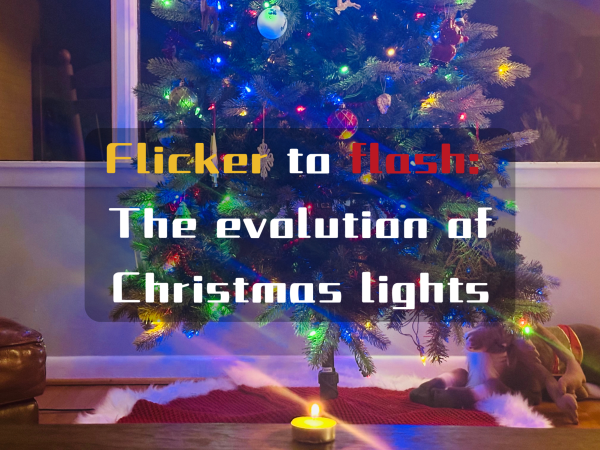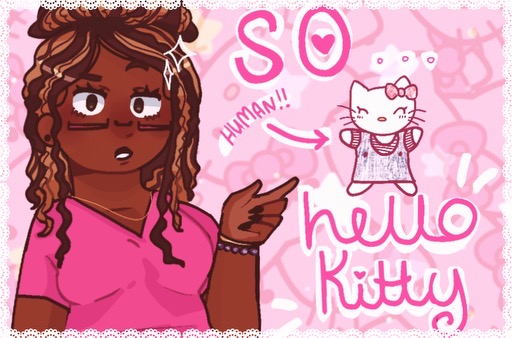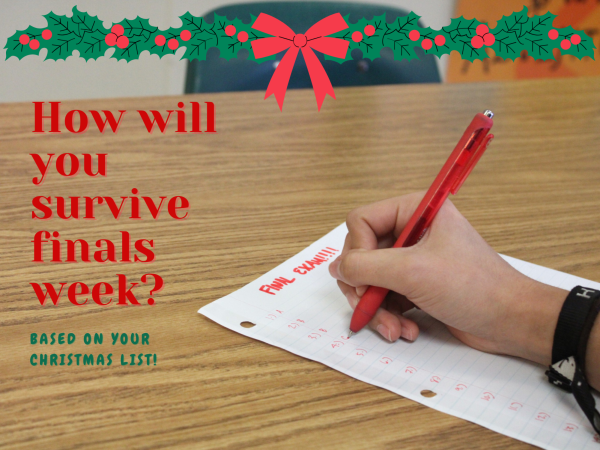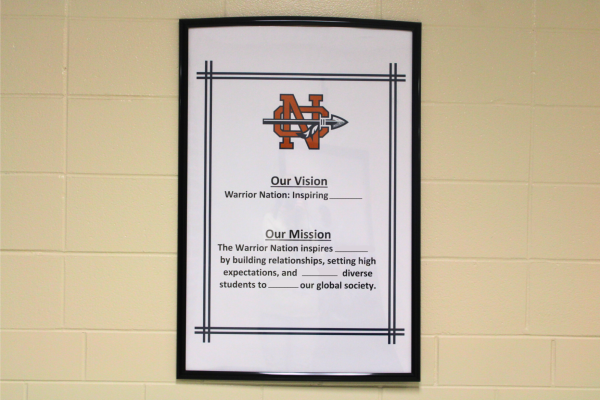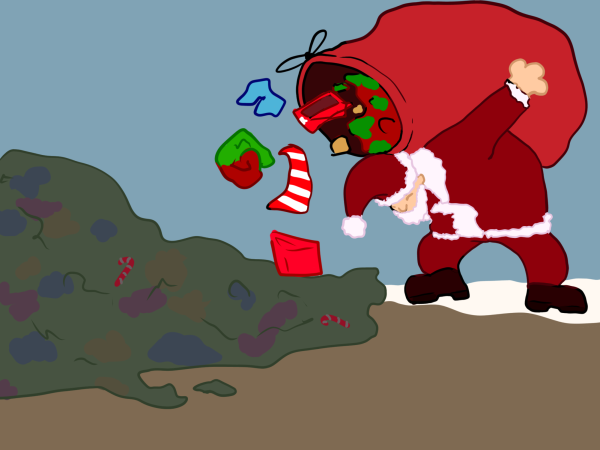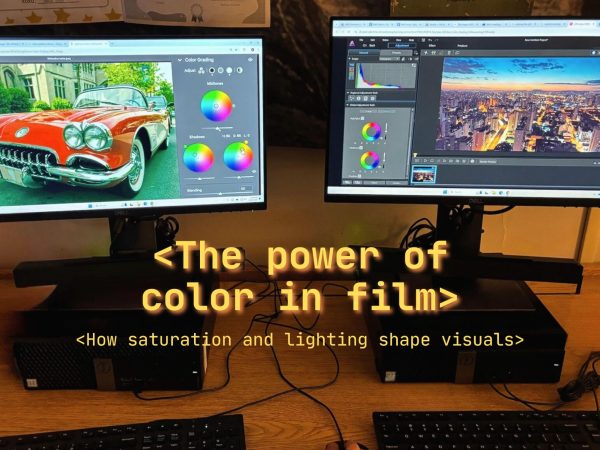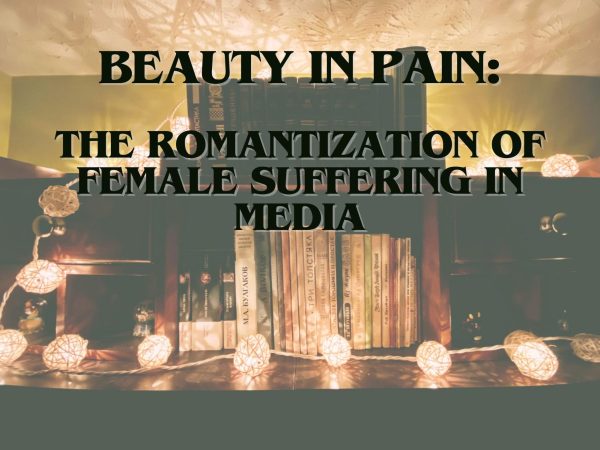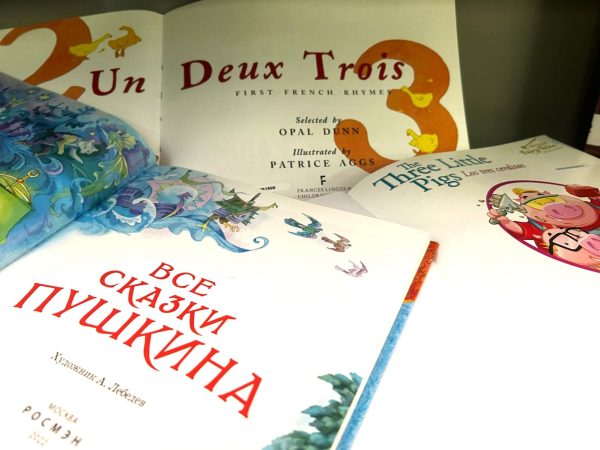Mirror, mirror: The evolution of beauty
A student experiments with mascara, using the latest beauty trend.
Fashion and beauty trends define societal expectations and how people present themselves to the world. Adolescents follow the crowd and copy trendsetters. This ongoing issue impedes on their style choices and how they see themselves. Trends change rapidly from year to year, and keeping up with them presents challenging.
Beauty trends constantly evolve over time. From the bob hairstyle in the 1920s to the 2016 “baking” method when applying cosmetics, trends continually change to fit the modern image of what classifies someone or something as beautiful. Throughout the history of our planet, different beauty trends arose due to the influence of the media, actors, actresses, and royalty and abiding by them only seemed necessary.
Brooke Phillips, a junior at NC, possesses an extreme passion for makeup artistry. She enjoys learning new techniques and collects makeup products from all different companies. Her collection includes her favorite cosmetics that each reside in a specific drawer based upon what their purpose is.
“I really like NARS, Too Faced, Kat Von D, and Anastasia Beverly Hills, but my Maybelline and NYX are my favorite drugstore brands,” Phillips said.
Her love for makeup allows her to express her creativity through something other than a typical art form, like photography, painting, or sculpting. Using cosmetics allow for women to feel empowered, not like they completely cake their face to hide their insecurities.
Despite her immense love for the world of makeup, she recognizes some of its flaws.
“I dislike how shady a lot of brands are when it comes collabs or just being honest about what is in their products,” Phillips said.
Phillips recommends using cosmetics as a way to express and learn more about yourself. Her passion will continue to take her far into adulthood.
Even today, beauty trends control a substantial deal of how women present themselves. Society looks down on those who do not follow the latest craze. Cosmetics and fashion provide the opportunity to express emotion and individuality, but specific viral trends kill self-expression. The pressure of undertaking certain trends creates carbon-copies of young people and their peers, which in turn affects self-esteem.
“I think the media wants people to think they are all about acceptance. We are exposed to how celebrities look and their success, and even if we aren’t consciously doing it, we are changing to be like them,” Phillips said.
Trends evolve based upon what people find fresh and exciting. The nineteenth century became a time of consequential change in the world. A time of war, depressions, and rebuilding, it provided the perfect outlet for beauty to develop.
By the end of the nineteenth century, the use of cosmetics became extremely common. Corporations like Maybelline and Max Factor made their debut, launching products like foundations, lipsticks, and mascaras. Makeup counters began popping up around the country, which allowed women to “try before you buy.” African-American women longed to possess a paler complexion due to the extreme segregation that existed within the United States, and the darker the skin complexion, the lower the hierarchy position. African American women remained subject to their skin color until after the 1960s.
In Kathy Lee Peiss’ book Hope in a Jar she noted that “pale and creamy was the desired skin; the solution for white women lay in an array of powders, paints, and bleaches. Two of the largest companies within the black community did not sell hair straighteners or bleaches.”
Women use beauty products to appear younger. However when the 1920s came roaring in, the dynamic of beauty changed dramatically.
The 1920s
According to Glamourdaze,the artificial face surfaced during the 1920s, and women wore heavy makeup around the eyes, while shaping their lips into a smaller “cupid’s bow” shape.
Eyeliner became a beauty staple as a result of the discovery of King Tut’s tomb, and women plucked their eyebrows into thin lines and sometimes shaved them off altogether.
Long hairstyles showed femininity, and short hairstyles stayed reserved for the more scandalous crowd of women, like flapper girls. The bob hairstyle became widely fashionable as well as tight ringlet curls.
The 1930s
Hollywood influenced beauty throughout the 1930s, and celebrities like Max Factor, Helena Rubenstein, and Elizabeth Arden became household names in the beauty world.
The expectations of beauty changed from the youthful maiden look to sexy and dramatic. Porcelain-like skin and smokey eyes adorned the faces of women across the nation. While dark eyeshadows increased in popularity in the 1920s, fresh and lighter shades, like greens and pinks, took over.
Compared to the 1920s, this decade allowed for a more playful time in makeup. Women stepped out of their comfort zones by trying new trends such as overdrawing their lips and even completely shaving off their eyebrows.
Throughout the 1930s, wavy hairstyles replaced the once popular bob cut and tight ringlets of the 1920s. Fashion Gone Rogue stated that “women began wearing their hair in more feminine styles with parts sweeping to the side or down the middle.” By the end of the decade, women preferred longer hairstyles, as they enhanced their femininity.
The 1940s
A number of our trends today derive from the 1940s. Thick, high-arched eyebrows, and applying blush from the apples of the cheeks outwards originated almost eight decades ago.
In the World War I, the ingredients used to produce cosmetics stayed limited and rationed to help the war effort. However, despite the worldly conflicts that arose during the 1940s, beauty continued to grow and pull women even further out of their comfort zones. Rosie the Riveter inspired women to ditch their household duties to serve their country, which shaped the pin-up model.
Pin-up models became plane nose art for World War II to keep soldiers motivated as well as inspiration to women on the homefront to wear bright red lipstick to show their support. New and innovative hairstyles arose before and after the war period. Popular styles included pin-curls, inspired by pin-up models, rolls, bangs or fringes, and pompadours. A number of trends changed from pre-war to post-war, and the 1940s advanced beauty farther than any other decade so far.
The 1950s
By the 1950s, beauty hit its golden age. For the first time, skincare and cosmetics collaborated and sold quicker than the traditional “face paint.”
Pink lipsticks replaced the once fashionable bold red lip, but only the younger crowd made the transition, while the older generations continued with the red. Heavy foundation and powder made a comeback from the 1930s, and although eyebrows held no definite shape trend, women plucked, shaped, and filled them in with a brow pencil if necessary.
A popular trend in current times, winged eyeliner made a comeback again as a more preferable glam than a heavy eyeshadow makeup look.
American women took a particular liking the Italian cut hairstyle which came from Italian movie stars like Gina Lollabrigida and Sophia Loren. The Italian Cut consisted of short, shaggy hair with sculpted waves, soft curls, and fluffy kiss curls. Other mainstream hairdos include curled and waved short hair, the American take on the Italian cut, longer hair and ponytails, a brush-under bob, and the Gamine look.
The 1960s
Overall, the 1950s and 1960s shared a great amount of similarities in terms of the makeup worn. Excessive powder, pink tones, and elegant eyes stayed in style in both decades. However, the focus shifted off of winged eyeliner and back onto emphasizing eyelashes.
Twiggy, a popular beauty icon in the 1960s, introduced wearing false lashes on top of real lashes to emphasize the beauty in their eyes.
By the end of the decade, women let go of the excessive use of foundations and powders since the trend of accentuating one’s natural eye shape became more mainstream. The beehive hairstyle derived from the incredibly popular bouffant style from the 1950s, while most other hairstyles like the flipped bob, afro, and mop top only became popular through celebrities wearing them.
Anita Swiderski, now a 73-year-old grandmother, took a strong liking to beauty and all it offered during the 1950s and 1960s. Over the two decades, she learned an array of makeup techniques and continues to use them almost 60 years later. Although she never let the media influence her decisions about her beauty, it still remained important to her to look prim and posh.
“I wanted to look good and look a certain way,” Swiderski said.
Swiderski followed trends that made her feel confident and maintains her love for beauty to this day.
The 1970s
A total flip from the 1960s, the 1970s focused on beautiful, glowing skin with less on the eyes. Women worshipped a natural and tan look and wanted to make it appear that they put in little-to-no effort in their appearance. In reality, it took women an immense amount of time and energy to perfect the “no makeup” makeup look. Highlighter, one of the most popular trends today, made a debut during the decade as well.
A handful of trends from the early 1900s made reappearances during this decade, but new trends surfaced as well. For example, long straightened hair, the ape, and the shag haircuts developed in the 1970s. The decade provided a time where older trends developed into a modern version of themselves.
The 1980s
Neon, neon, neon; a time of big hair and neon eyeshadows, the 1980s took a complete 360 spin from what makeup looked like in past decades. Simple hairstyles made way for larger than life hairstyles like the side ponytail, mullets, perms, and hair teasing.
Neon colors blew up the makeup industry, and dark lip liners and heavy blush adorned the faces of now adult baby boomers and teenagers. Most of the trends created in the 1980s survived into later generations, however the memory of neons and hefty hair will live on in the hearts of baby boomers and generation X forever.
The 1990s
The 1990s holds the birthplace of a number of the trends used today in beauty. Nude lipstick, dark lipgloss, shimmery eyeshadows, and white eyeliner pencil originated in the heart of this decade. Skinny eyebrows made their third reappearance dating back to the 1920s and 1930s. Mini-buns, crimped hair, and box braids increased in popularity; these styles remain in use today.
In modern times, people notice that trends tend to repeat themselves. According to Vocativ analysts, trends repeat themselves every 20 to 30 years, with trends like thick eyebrows, intense highlighter, and space buns recently revamped. Beauty staples from the 1930s tend to make a second debut in the 1950s, and so on and so forth.
The 1900s allowed for a time of beauty exploration. Trends surfaced and dispersed with each passing decade which influenced the trends of today. Even though fashion and beauty hold certain expectations for society, by no means should people put their true selves to the side to follow every fad that comes their way.
Currently, beauty trends continue to control the minds of young people. The turn of the century allowed for a new era of beauty to arise, and society can see the influences of beauty from the twentieth century manifest into today. From 2000 on, beauticians watched the 1900s slowly fade away, but fads from the century always find a way back to modern culture.
For thousands of years, beauty defined society. It shows what people find beautiful and allows for humans to express their features in a bright light.
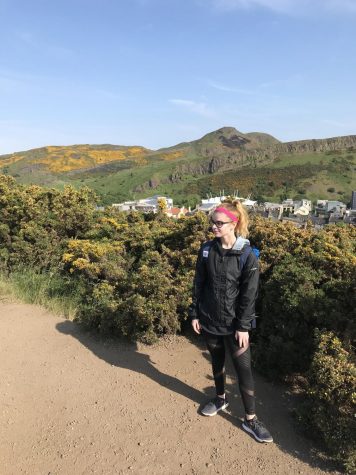
Senior Shannon Rapp, entertainment editor to The Chant, is a three year veteran on staff this year. With an interest in journalist writing, she joined...





